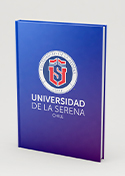Browsing by Author "Squeo Francisco A."
Dispossession and governance: The invisible role of indigenous peoples in protected natural areas in Chile
(2023/12/01) Huaiquimilla-Guerrero Katherine; Moscote-Guerra Jeimy; Ramirez-Rivera Sebastian; Duhalde-Correa Luciano A.; Peralta-Scholz Maria Jose; Silva Fernanda Orellana; Plaza Veronica; Barrera Adrian Sanhueza; Squeo Francisco A.; Gaymer Carlos F.
At the international level, the progressive recognition of indigenous peoples and their customary rights in leg-islative tools has established new guidelines for the conservation of natural resources in protected areas (PAs). The indigenous peoples (IPs) in Chile who suffered the dispossession of ancestral areas after the declaration of PAs, have demanded their inclusion and participation based on the legislative tools available. Via the available scientific, institutional and gray literature, we identified seven ways in which IPs contribute to and participate in the protection of biodiversity, conservation and sustainability of natural resources in marine and terrestrial ecosystems in Chile: resistance or defense of ancestral areas, biocultural conservation, sustainable practices, participation in consultation, promotion of area creation, development of management plans, and management, comprising participation in administration, co-administration or co-management. Sixty percent of IPs participate in the management of 7.3% of Chile's PAs. Overall, our results show that the Rapanui and Kawashkar peoples participate mostly in the co-management of 729,439 km2 and 668 km2 of MPAs, respectively. The Aymara and Atacamen similar to o peoples lead the management of TPAs in the north of Chile, with 1378 km2 and 872.36 km2 , respectively. The Mapuche people, with a higher population density, participate in both environments, leading the administration of maritory with 3475.98 km2 of Marine and Coastal Areas for Indigenous Peoples (MCAIPs). The participation of the remaining peoples is limited. Advancing the recognition and role of IP in the protection of nature via a shared biocultural governance is a challenge for the Chilean State.
